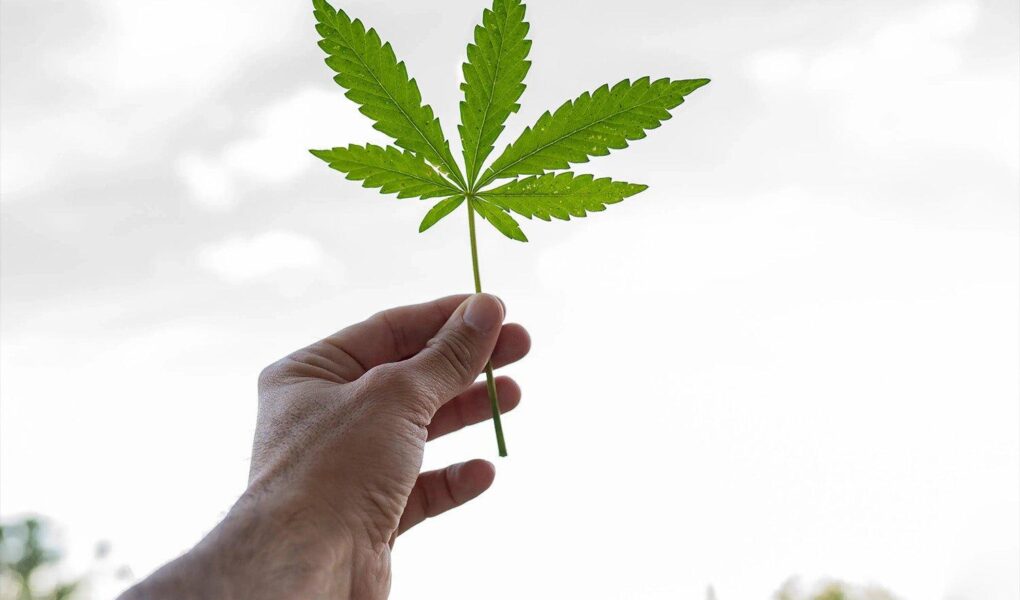As the sun sets on decades of stigma, the landscape of cannabis is shifting beneath our feet, revealing a vibrant tapestry of culture, science, and potential. No longer confined to whispers in the shadows, marijuana has burst into the mainstream, commanding attention not only for its recreational appeal but also for its intriguing role in wellness, industry, and innovative research. In this article, we invite you to explore the multifaceted world of marijuana—unpacking its history, understanding its various forms, and delving into the latest findings that promise to reshape perceptions. Whether you’re a curious novice or an informed enthusiast, join us on a journey through the swirling smoke of myths and facts as we illuminate the rich history and contemporary significance of this remarkable plant.
Table of Contents
- Understanding the Benefits and Risks of Marijuana Use
- Navigating the Different Strains: A Guide to Types and Effects
- Legal Landscape: What You Need to Know About Cannabis Regulations
- Cultivation and Consumption: Tips for Responsible Use and Growing
- Q&A
- Final Thoughts
Understanding the Benefits and Risks of Marijuana Use
Marijuana, often referred to as cannabis, has garnered increasing attention for its potential benefits, particularly in the realms of health and wellness. Many users report a variety of positive effects, including:
- Pain Relief: Cannabis may alleviate chronic pain and reduce inflammation, making it a popular choice for those with conditions like arthritis or fibromyalgia.
- Anxiety Reduction: Certain strains are known for their calming properties, providing relief from anxiety and stress.
- Enhanced Mood: Users often experience improved mood and a sense of euphoria, which can be beneficial for individuals suffering from depression.
- Appetite Stimulation: It can help increase appetite, especially beneficial for individuals undergoing treatments that diminish hunger.
However, it is crucial to consider the potential risks associated with marijuana use. Some of these risks include:
- Dependence: Regular use may lead to dependence, with some users experiencing withdrawal symptoms upon cessation.
- Cognitive Impairment: Marijuana may affect memory, attention, and judgement, impacting daily functioning and relationships.
- Respiratory Issues: Smoking marijuana can lead to lung irritation and other respiratory problems, similar to tobacco use.
- Legal Consequences: Depending on location, the use of marijuana may still be illegal, leading to possible legal repercussions.
Navigating the Different Strains: A Guide to Types and Effects
Understanding the various types of marijuana strains is essential for both novice users and seasoned connoisseurs. Strains are often categorized into three main types: Indica, Sativa, and Hybrid. Each type brings unique effects and benefits:
- Indica – Typically favored for its calming effects, Indica strains are perfect for relaxation and alleviating stress. They are often chosen for nighttime use due to their sedative properties.
- Sativa - Known for uplifting and energizing effects, Sativa strains are ideal for daytime use, as they can enhance creativity and focus.
- Hybrid – These strains combine elements of both Indica and Sativa, providing a balanced experience that can be tailored to suit individual preferences.
Beyond the basic categories, it’s important to delve into the effects and potential medicinal benefits that specific strains can provide. Users often report varying experiences based on the strain’s terpene profile and cannabinoid content:
| Strain Name | Type | Effects |
|---|---|---|
| Granddaddy Purple | Indica | Relaxation, Pain Relief, Sleep Aid |
| Sour Diesel | Sativa | Euphoria, Energy, Creativity |
| Blue Dream | Hybrid | Balance, Relaxation, Focus |
When selecting a strain, consider your desired outcome and the specific effects that resonate with your needs. With the right knowledge, you can confidently choose the strain that best fits your lifestyle and personal preferences.
Legal Landscape: What You Need to Know About Cannabis Regulations
The world of cannabis regulations is an ever-evolving landscape that varies significantly by region and can impact everything from production to possession. As legalization efforts continue to gain momentum across many states and countries, staying informed is essential. Here are some key aspects to consider:
- State vs. Federal Law: In some regions, cannabis may be legal for recreational or medicinal use at the state level, while still classified as illegal federally, leading to conflicts in enforcement.
- Licensing Requirements: Businesses involved in the cannabis industry often need specific licenses, which vary by state and type of operation.
- Tax Implications: Cannabis companies can face unique taxation issues, including higher tax rates and restrictions on certain deductions.
- Public Consumption Regulations: Many areas have strict rules regarding where cannabis can be consumed, with some regions allowing it only in private residences.
Additionally, understanding local ordinances can vastly affect cannabis-related activities. For instance, certain cities may have stricter regulations independent of state laws. Here’s a brief comparison of the regulations in several jurisdictions:
| Location | Recreational Use | Medical Use |
|---|---|---|
| California | Legal | Legal |
| New York | Legal | Legal |
| Texas | Illegal | Limited |
| Canada | Legal | Legal |
Cultivation and Consumption: Tips for Responsible Use and Growing
Responsible cultivation and consumption of marijuana require knowledge, patience, and respect for the plant. When growing, choose strains that suit your climate and skill level, and consider the space and resources you have available. Essential tips for cultivation include:
- Understand your local regulations: Check the laws regarding growing marijuana in your area to ensure compliance.
- Select quality seeds: Invest in reputable seeds from a trusted source to enhance yield and potency.
- Optimize your growing environment: Control factors like temperature, humidity, and light to create the ideal conditions for growth.
- Practice good watering habits: Avoid overwatering, as this can lead to root rot; find the perfect balance.
- Stay vigilant about pests and diseases: Regularly inspect your plants to catch any issues early on.
Equally important is responsible consumption, which ensures a positive experience with cannabis. To enjoy the benefits safely, consider the following guidelines for use:
- Start slow: If you’re new to marijuana, begin with a small amount and wait to gauge its effects before consuming more.
- Know your limits: Be aware of your tolerance and how different strains may affect you.
- Avoid mixing substances: Combining marijuana with alcohol or other drugs can lead to unpredictable effects.
- Consume in a safe environment: Choose a comfortable setting, especially if you’re trying a new strain or method.
- Educate yourself: Understand the different consumption methods (edibles, smoking, tinctures) and their respective onset times and effects.
Q&A
Q&A: Exploring the World of Marijuana
Q: What is marijuana, and where does it come from?
A: Marijuana, also known as cannabis, is a plant that has been cultivated for thousands of years. Originating in Central Asia, it has two primary species: Cannabis sativa and Cannabis indica. People use marijuana for various purposes, including medicinal, recreational, and industrial applications. The flowers, leaves, and extracts of the plant contain chemical compounds called cannabinoids, with THC (tetrahydrocannabinol) and CBD (cannabidiol) being the most well-known.
Q: How does marijuana affect the body?
A: When consumed, marijuana interacts with the endocannabinoid system, which plays a role in regulating a variety of functions such as mood, memory, pain, and appetite. THC, the psychoactive component, can produce feelings of euphoria and relaxation, while CBD is often noted for its potential therapeutic benefits, such as reducing inflammation and anxiety without the “high.” However, individual reactions can vary significantly based on the strain, dosage, and method of consumption.
Q: Is marijuana legal everywhere?
A: Marijuana legality varies widely around the world. In some places, it is completely legal for both recreational and medicinal use, whereas in others, it remains strictly prohibited. Many countries and U.S. states have decriminalized it or allowed for limited medical use. Always check local laws because the landscape is continually evolving, and what may be legal today could change tomorrow.
Q: What are the potential benefits of using marijuana?
A: Research suggests that marijuana may offer several potential benefits, including pain relief, reduction of inflammation, alleviation of anxiety and depression, and appetite stimulation for those undergoing treatments like chemotherapy. Some individuals also find it helpful for managing chronic conditions such as epilepsy or multiple sclerosis. However, it’s essential to consult a healthcare provider before using marijuana for medicinal purposes.
Q: Are there any risks associated with marijuana use?
A: Yes, like any substance, marijuana comes with potential risks. Short-term effects can include impaired memory and coordination, increased heart rate, and anxiety or paranoia in some users. Long-term use, particularly when started in adolescence, may lead to dependency, diminished cognitive abilities, or mental health issues such as depression and anxiety. It’s crucial for individuals to weigh these risks against their personal health situations.
Q: What forms does marijuana come in?
A: Marijuana is incredibly versatile and can be found in several forms, including dried flower (buds), edibles (like gummies and baked goods), oils, tinctures, and concentrates (such as wax or shatter). Each form offers different effects and onset times. For instance, smoking or vaporizing can yield immediate effects, while edibles might take longer to kick in but can last longer.
Q: What should someone consider before trying marijuana for the first time?
A: If you’re considering trying marijuana, there are a few factors to keep in mind: your current health status, any potential legal ramifications in your area, and the method of consumption you’re interested in. Start with a low dose to see how your body reacts, especially if you’re using it for the first time. It might also help to have a knowledgeable friend or to consult a professional who can guide you through the experience.
Q: How will marijuana affect my ability to drive or operate machinery?
A: Marijuana can impair motor skills, reaction times, and judgment, much like alcohol. It’s advisable to avoid driving or operating heavy machinery after using marijuana, even if you feel okay, as individual responses can be unpredictable. Prioritizing safety—yours and others’—is crucial when it comes to any substance that affects cognitive and physical abilities.
Q: Can marijuana interact with other medications?
A: Yes, marijuana can interact with various medications, potentially altering their effects or intensifying side effects. It’s especially important to consult a healthcare provider if you’re taking prescription medications, as the combination of substances can lead to unforeseen complications. Transparency about marijuana use with your healthcare team will help ensure safe management of your overall health.
As you delve into the complex world of marijuana, remember that information is power. Always remain open to learning, explore responsibly, and prioritize your well-being.
Final Thoughts
As we draw the curtains on our exploration of marijuana, it’s clear that this plant is much more than a simple herb. With its rich history, complex compounds, and evolving legal landscape, marijuana continues to spark conversation, research, and innovation. Whether viewed through the lens of wellness, recreation, or industry, the narrative surrounding cannabis is a tapestry woven with diverse perspectives and discoveries. As we move forward, staying informed and engaged will be essential as society unravels the layers of this multifaceted plant. Let curiosity be your guide as you navigate this ever-evolving topic, and remember, the journey through the world of marijuana is just beginning.



